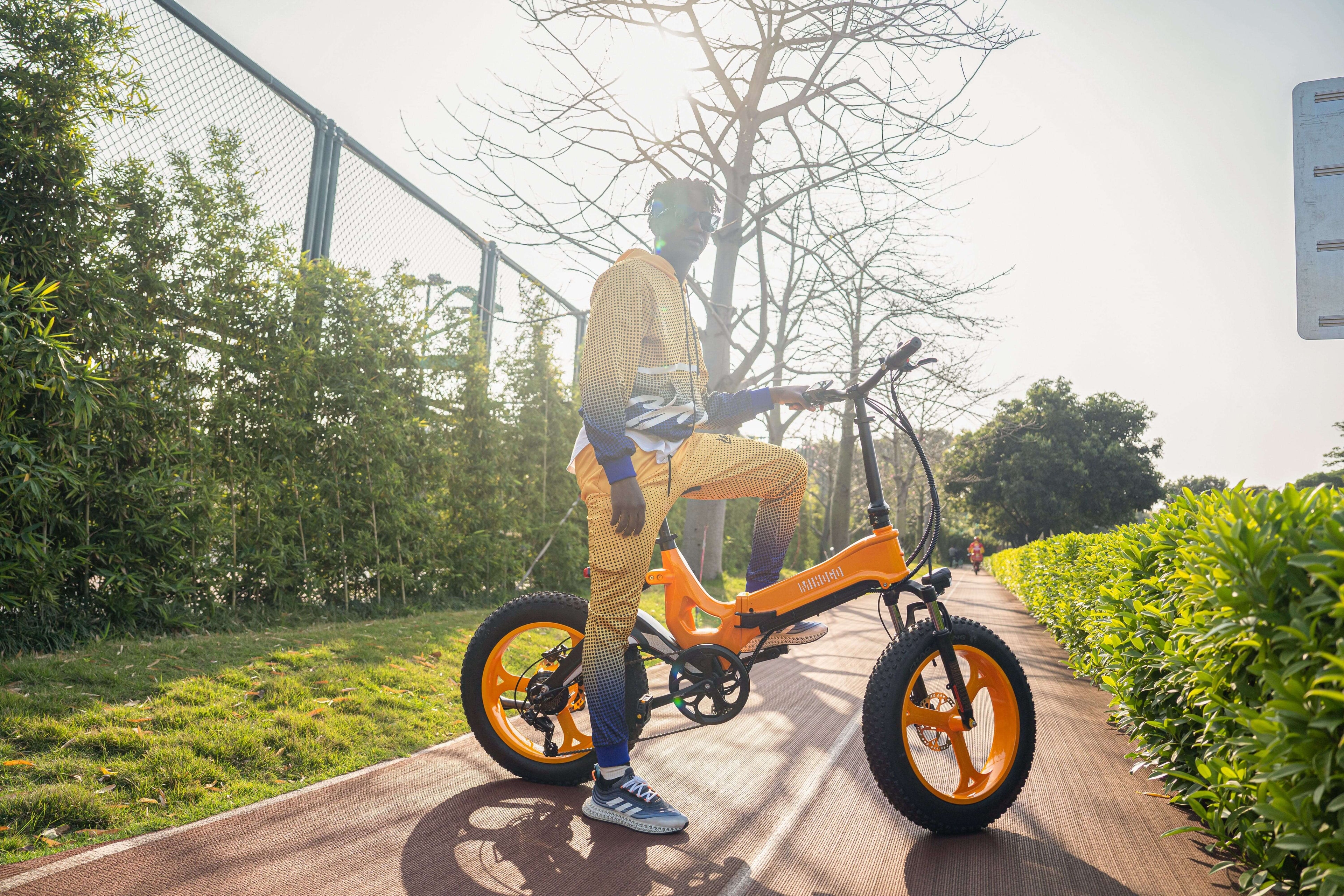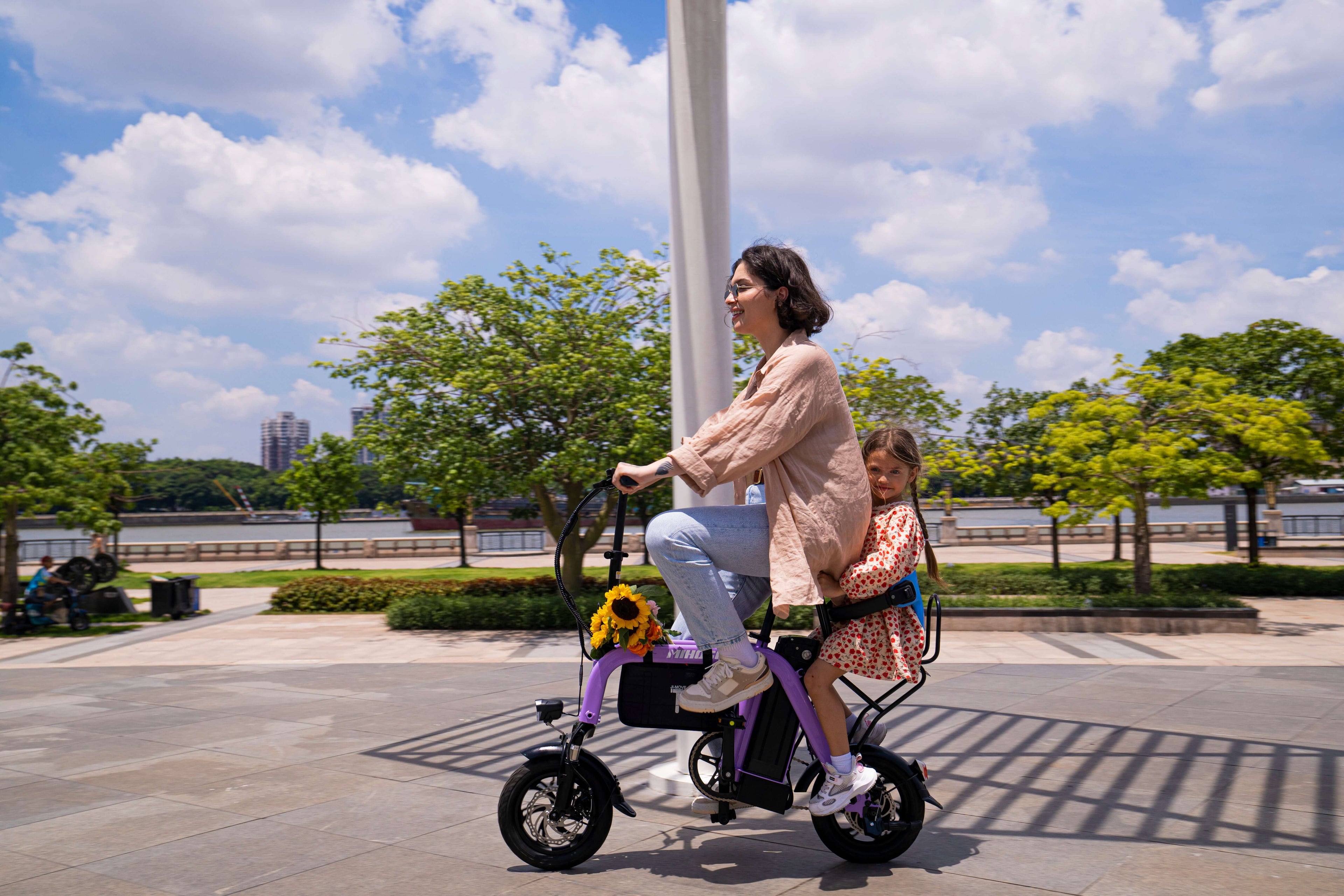Understanding California's Three-Class E-Bike System
California adopted the standardized three-class e-bike system in 2015 through Assembly Bill 1096, following a framework created by PeopleForBikes and the Bicycle Product Suppliers Association. This classification system has since been adopted by over 40 states nationwide, making California a trendsetter in e-bike legislation.
The Foundation: What Defines an E-Bike in California
Under California law, an electric bicycle is defined as "a bicycle equipped with fully operable pedals and an electric motor of less than 750 watts." This fundamental definition ensures that e-bikes remain bicycle-like vehicles rather than motorcycles or mopeds.
Key requirements for all California e-bikes:
- Must have fully operable pedals
- Electric motor cannot exceed 750 watts of power
- Must display a permanent classification label
- Cannot be modified to exceed class specifications
The 2025 updates to California e-bike laws have strengthened these requirements, particularly around motor power limits and battery safety certifications.
Class 1 E-Bikes: Pedal-Assist Only
Quick Definition: Class 1 e-bikes provide motor assistance only when you're pedaling and stop assisting at 20 mph.
Class 1 Specifications
- Motor Type: Pedal-assist only (no throttle allowed)
- Maximum Speed: Motor assistance cuts off at 20 mph
- Power Limit: 750 watts maximum
- Pedaling Required: Yes - motor only engages when pedaling
Class 1 Age and Helmet Requirements
Age Restrictions: No minimum age requirement at the state level Helmet Laws:
- Riders under 18 must wear helmets
- Adults (18+) are not required to wear helmets, but it's strongly recommended
Where Can You Ride Class 1 E-Bikes?
Class 1 e-bikes enjoy the broadest access rights in California:
- All public roadways where bicycles are permitted
- Designated bike lanes and bike paths
- Multi-use trails (unless specifically prohibited)
- Most state and national park trails where traditional bikes are allowed
- Paved beach paths and recreational areas
Important Note: Local jurisdictions can create additional restrictions, so always check local regulations before riding in new areas.
Class 1 Benefits
- Widest Access: Can ride virtually anywhere traditional bikes are permitted
- No Age Restrictions: Suitable for riders of all ages (with proper supervision for minors)
- Most Economical: Generally the least expensive e-bike option
- Natural Feel: Riding experience closely mimics traditional cycling with assistance
Class 2 E-Bikes: Throttle-Equipped Freedom
Quick Definition: Class 2 e-bikes feature a throttle that can power the bike without pedaling, with motor assistance up to 20 mph.
Class 2 Specifications
- Motor Type: Both pedal-assist and throttle operation
- Maximum Speed: Motor assistance cuts off at 20 mph
- Power Limit: 750 watts maximum
- Pedaling Required: No - throttle can operate independently
Class 2 Age and Helmet Requirements (Updated 2025)
Age Restrictions:
- Riders must be at least 12 years old (new 2025 requirement)
- Under Assembly Bill 1778, some counties may require riders to be 16+
Helmet Laws (Enhanced 2025 Requirements):
- ALL Class 2 riders must wear helmets regardless of age (new statewide requirement)
- This represents a significant change from previous regulations
Where Can You Ride Class 2 E-Bikes?
Class 2 e-bikes have access to most areas where traditional bicycles operate:
- Public roadways and bike lanes
- Most bike paths and multi-use trails
- Recreational areas and parks (check local rules)
- Beach paths and designated cycling areas
Restrictions: Some areas may prohibit throttle-assisted bikes on certain trails or during peak hours.
Class 2 Benefits
- Accessibility: Excellent for riders with mobility limitations
- Convenience: No pedaling required for motor assistance
- Versatility: Can operate in both throttle and pedal-assist modes
- Hill Climbing: Superior performance on inclines without physical exertion
Learn more about accessibility features in our adaptive e-bike guide for riders with special needs.
Class 3 E-Bikes: High-Speed Performance
Quick Definition: Class 3 e-bikes provide pedal-assisted power up to 28 mph and have the strictest regulations.
Class 3 Specifications
- Motor Type: Pedal-assist only (throttles prohibited in California as of 2025)
- Maximum Speed: Motor assistance cuts off at 28 mph
- Power Limit: 750 watts maximum
- Special Equipment Required: Must include a speedometer
Class 3 Age and Helmet Requirements
Age Restrictions: Riders must be at least 16 years old (strictly enforced) Helmet Laws: ALL Class 3 riders must wear helmets regardless of age (no exceptions)
Where Can You Ride Class 3 E-Bikes?
Class 3 e-bikes have more restricted access compared to Class 1 and 2:
Permitted Areas:
- Public roadways and streets
- Designated bike lanes on roads
- Bike routes on roadway shoulders
Prohibited Areas:
- Multi-use bike paths (unless specifically authorized)
- Most recreational trails
- Sidewalks (same as traditional bicycles)
Local Authority: Cities and counties can authorize Class 3 access to specific paths through local ordinances.
Class 3 Benefits
- Commuter Focused: Ideal for longer commutes and time-sensitive travel
- Highway Alternative: Excellent for road cycling and transportation
- Speed Advantage: Significant time savings for regular commuters
- Advanced Features: Often include premium components and technology
For comprehensive commuting tips, check out our e-bike commuting essentials guide.
2025 California E-Bike Law Updates
Major Changes Affecting All Classes
Throttle Restrictions:
- Class 1 and Class 3 e-bikes cannot have throttles (strengthened enforcement)
- Class 2 remains the only class permitting throttle operation
- Limited throttle assistance allowed up to 3.7 mph for Class 3 (walk-assist mode only)
Battery Safety Requirements:
- All e-bike batteries must be certified by January 1, 2026
- UL certification or equivalent accredited testing required
- Rental companies must comply by 2028
Enhanced Enforcement:
- Stricter penalties for non-compliance
- Increased focus on illegal modifications
- School and police authority to confiscate non-compliant e-bikes
Local Pilot Programs
Marin County (AB 1778):
- Class 2 riders must be 16+ years old
- Mandatory helmets for all Class 2 riders
- Pilot program expires January 1, 2029
San Diego County (AB 2234):
- Local authorities can prohibit riders under 12 on Class 1 and 2 e-bikes
- Several cities have opted into these restrictions
Legal Compliance and Safety Considerations
Required Equipment and Labeling
All California e-bikes must display a permanent label showing:
- Classification number (1, 2, or 3)
- Top assisted speed
- Motor wattage
- Beginning July 1, 2026: Information must be etched on the frame
Modification Restrictions
Prohibited Modifications:
- Increasing motor power beyond 750 watts
- Modifying speed capabilities beyond class limits
- Removing or disabling safety features
- Installing "tuning kits" or speed modification devices
Consequences of Illegal Modifications:
- Reclassification as motor vehicle (requiring registration, license, insurance)
- Fines and citations
- Potential confiscation
- Voided warranties
Safety Best Practices for All Classes
Essential Safety Equipment:
- Properly fitted, certified helmet
- Front and rear lights
- Reflective clothing for visibility
- Bell or horn for signaling
Riding Safety Rules:
- Follow all traffic laws
- Ride with traffic flow
- Use designated bike facilities when available
- Signal turns and stops clearly
- Maintain safe speeds for conditions
For detailed safety information, visit the California Department of Motor Vehicles bicycle safety resources.
Choosing the Right Class for Your Needs
Class 1: Best For
- Trail enthusiasts who want maximum access
- Fitness-focused riders who enjoy pedaling
- Budget-conscious buyers seeking value
- New e-bike riders learning the basics
- Families with varied age riders
Class 2: Best For
- Accessibility needs requiring throttle assistance
- Stop-and-go commuting in urban environments
- Cargo hauling and utility applications
- Riders with physical limitations
- Mixed-terrain adventures
Class 3: Best For
- Long-distance commuters prioritizing speed
- Road cycling enthusiasts
- Time-sensitive transportation needs
- Experienced riders comfortable with higher speeds
- Highway-adjacent route users
Regional Considerations and Local Laws
Popular California E-Bike Destinations
Northern California:
- Marin County: Enhanced helmet and age restrictions under AB 1778
- San Francisco Bay Area: Extensive bike lane networks favor all classes
- Wine Country: Many trails restrict to Class 1 only
Southern California:
- Los Angeles County: Mixed regulations by city
- Orange County: Local communities implementing stricter controls
- San Diego County: AB 2234 pilot program in effect
Central California:
- Monterey Bay Area: Class 1 and 2 welcome on coastal paths
- Central Valley: Road-focused riding favors Class 3
- Sierra Foothills: Trail access varies by land management agency
Local Authority Variations
Cities and counties can:
- Impose additional helmet requirements
- Set stricter age limits
- Restrict access to specific areas
- Create unique local regulations
Always check with local authorities before riding in new jurisdictions. Visit the League of American Bicyclists for state-by-state law comparisons.
Future of California E-Bike Classifications
Emerging Trends
Technology Integration:
- Smart connectivity and app integration
- Advanced battery management systems
- Integrated safety features and lighting
- GPS tracking and theft protection
Infrastructure Development:
- Expanding protected bike lane networks
- E-bike specific parking and charging stations
- Improved trail access for appropriate classes
- Integration with public transit systems
Regulatory Evolution:
- Potential federal standardization efforts
- Enhanced safety certification requirements
- Possible expansion of pilot programs
- Integration with autonomous vehicle planning
Making Your E-Bike Purchase Decision
Key Questions to Consider
- Where will you primarily ride? (Determines access requirements)
- What's your fitness level? (Influences pedal-assist vs. throttle preference)
- What's your typical trip distance? (Speed and battery range considerations)
- Who else might ride the bike? (Age and helmet requirement factors)
- What's your local terrain like? (Power and speed requirements)
Essential Features to Look For
All Classes Should Include:
- UL-certified battery and charging system
- Quality braking system appropriate for speeds
- Durable frame construction
- Clear, easy-to-read display
- Reliable motor from reputable manufacturer
Class-Specific Considerations:
- Class 1: Look for intuitive pedal-assist sensors
- Class 2: Ensure smooth throttle operation and transition
- Class 3: Verify speedometer accuracy and brake performance
Conclusion: Navigating California's E-Bike Future
Understanding California's e-bike classifications empowers you to make informed decisions about your electric bike purchase and usage. As the state continues to refine regulations and expand infrastructure, staying current with these classifications ensures safe, legal, and enjoyable riding experiences.
The three-class system provides a clear framework that balances innovation with safety, giving riders options that match their specific needs and riding styles. Whether you choose the trail-friendly versatility of Class 1, the accessibility features of Class 2, or the commuter-focused performance of Class 3, you're joining a growing community of Californians embracing sustainable transportation.
For the latest updates on California e-bike laws and safety information, bookmark the California Bicycle Coalition website and stay informed about regulatory changes that may affect your riding experience.








